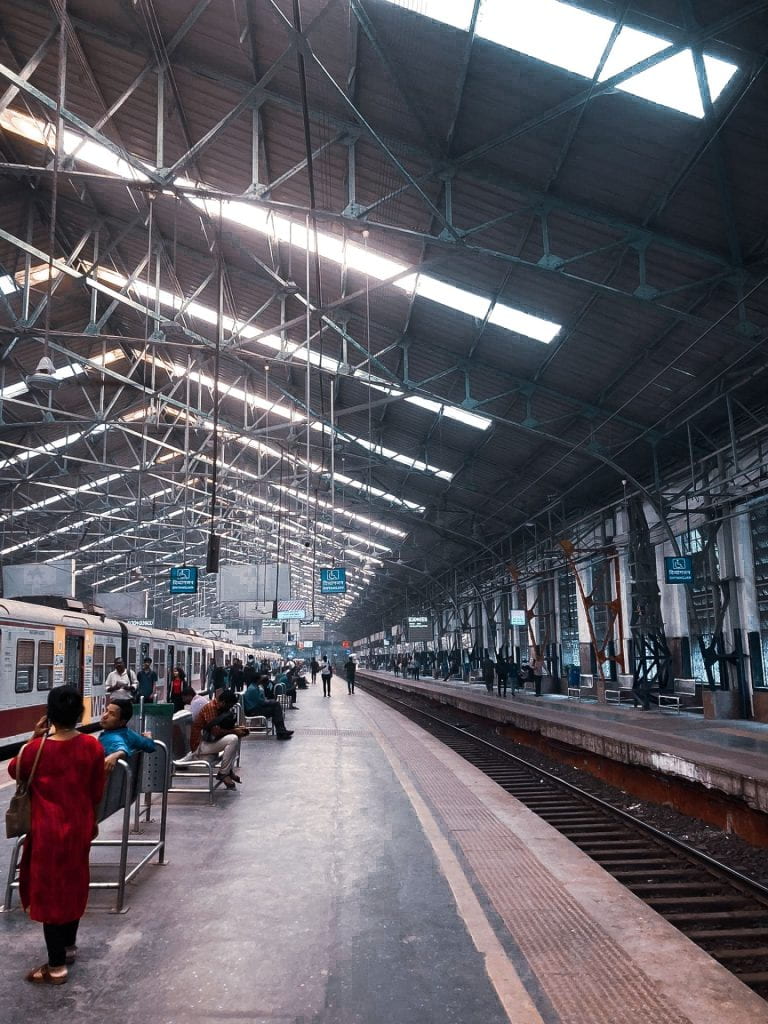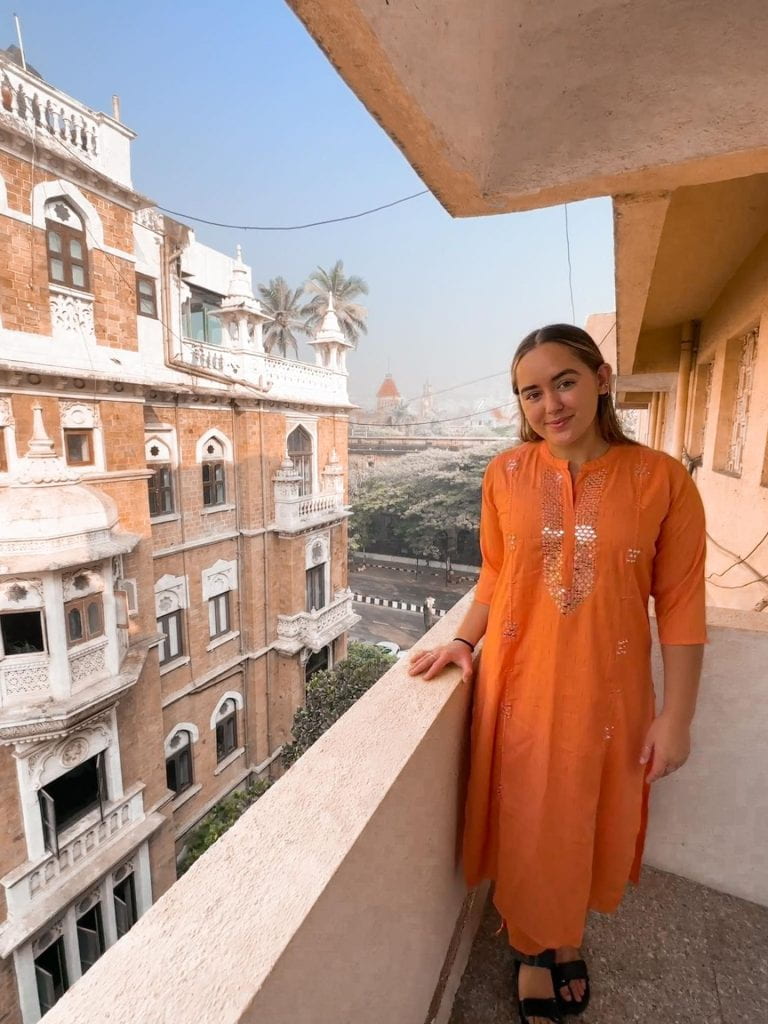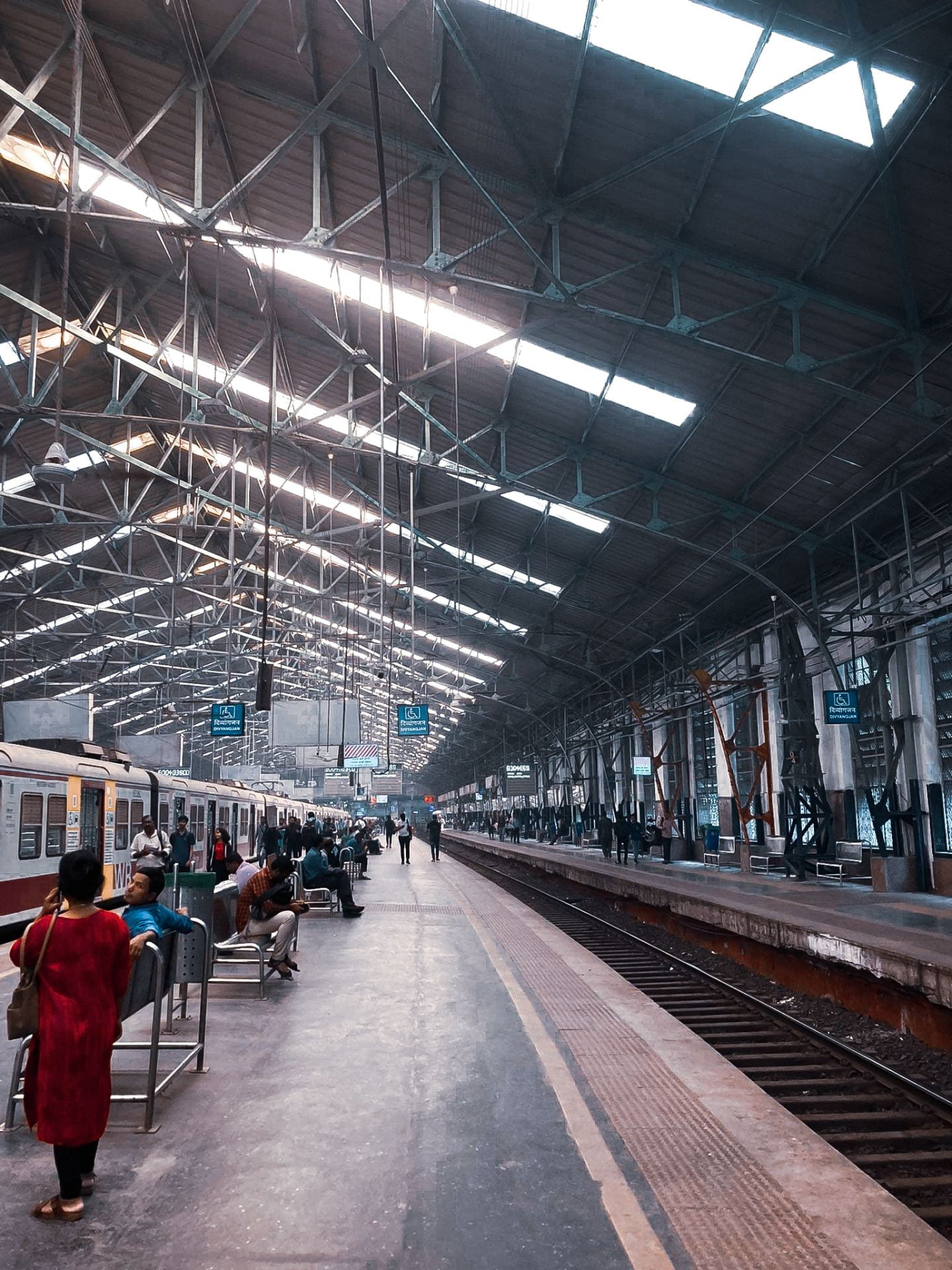Travelling to work was something I worried about. I had always seen photos and read about the sardine train experience in India; hundreds of people crammed into each carriage or hanging out the side of the train.
It was our second day in India when we had to figure out the train system and what train to catch to work each day. Thankfully, my work placement was reasonably close compared to others; 45 minutes one way. The train station, Churchgate, was a 15-minute walk away, a 20-minute train, and then another 10-minute walk.
Naveen, the host organiser, took those travelling on the Western line to Churchgate. We were shown what ticket office we needed to purchase our monthly passes from. To travel from Churchgate to the suburb of my work placement; Dadar for one month, it cost me 490RS! That’s around $9NZD!
I was nervous for my first day of work, but thankfully I was interning with Tabby, another student, so we caught the train together. We arrived at the station just after 10:20 am, and to make it in time for work, we headed straight for the ticket counter. At first, we went into the wrong queue, and that particular ticket operator did not speak English, thus he could not understand what we were saying. A kind man in the queue translated what was being said and told us we needed to go to the first booth. In a matter of minutes, we got our monthly pass and headed for the train. By this time, it was 10:27. We walked swiftly down the right platform and looked for the First Class Women’s only carriage. We found it in time, and soon after, the train headed off. Unfortunately, we did the one thing we shouldn’t do- be late to work. Despite this, we had an eventful experience with the Indian train system.
A tip we learned before catching the train is to use the app ‘M-Indicator’. An app that held all train routes, times, departures and arrivals to know what train one needed to get and when. It was beneficial, particularly as one of the tricks about getting around in India is to act as if you know where to go. I would always check the app before leaving/arriving so I did not need to pull out my phone amongst hundreds of people. As we had our monthly passes, it was easy to stick to the same train, at the same time, from the same platform, each day.
Some comparisons between the train system in Mumbai and that of Auckland Transport is that Mumbai has fast and slow trains; fast trains miss several stations and only stop at big stations. There are both second and first-class carriages, each class having a women’s carriage. To identify first-class or women’s, striped red/green signs and a photo of women are displayed on the carriage. First-class costs four times the price of the second class, which is less than $1NZD! Something you would not get in New Zealand.


